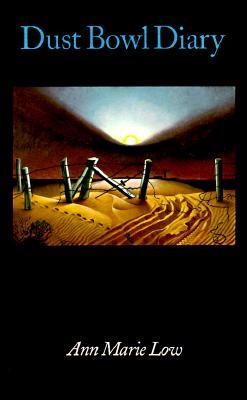
- We will send in 10–14 business days.
- Author: Ann Marie Low
- Publisher: University of Nebraska Press
- Year: 1984
- Pages: 188
- ISBN-10: 0803279132
- ISBN-13: 9780803279131
- Format: 13.7 x 21.3 x 1.3 cm, softcover
- Language: English
- SAVE -10% with code: EXTRA
Reviews
Description
"Life in what the newspapers call 'the Dust Bowl' is becoming a gritty nightmare," Ann Marie Low wrote in 1934. Her diary vividly captures that "gritty nightmare" as it was lived by one rural family-and by millions of other Americans. The books opens in 1927-"the last of the good years"-when Ann Marie is a teenager living with her parents, brother, and sister on a stock farm in southeastern North Dakota. We follow her family and friends, descendants of homesteaders, through the next ten years-a time of searing summer heat and desiccated fields, dying livestock, dust to the tops of fence posts and prices at rock bottom-a time when whole communities lost their homes and livelihoods to mortgages and, hardest of all, to government recovery programs. We also see the coming to maturity of the author in the face of economic hardship, frustrating family circumstances, and the stifling restrictions that society then placed on young women. Ann Marie Low's diary, supplemented with reminiscences, offers a rich, circumstantial view of rural life a half century ago: planting and threshing before the prevalence of gasoline-powered engines, washing with rain water and ironing with sadirons, hauling coal on sleds over snow-clogged roads, going to end-of-school picnics and country dances, and hoarding the egg and cream money for college. Here, too, is an iconoclastic on-the-scene account of how a federal work project, the construction of a wildlife refuge, actually operated. Many readers will recognize parts of their own past in Ann Marie Low's story; for others it will serve as a compelling record of the Dust Bowl experience.
EXTRA 10 % discount with code: EXTRA
The promotion ends in 10d.04:38:57
The discount code is valid when purchasing from 10 €. Discounts do not stack.
- Author: Ann Marie Low
- Publisher: University of Nebraska Press
- Year: 1984
- Pages: 188
- ISBN-10: 0803279132
- ISBN-13: 9780803279131
- Format: 13.7 x 21.3 x 1.3 cm, softcover
- Language: English English
"Life in what the newspapers call 'the Dust Bowl' is becoming a gritty nightmare," Ann Marie Low wrote in 1934. Her diary vividly captures that "gritty nightmare" as it was lived by one rural family-and by millions of other Americans. The books opens in 1927-"the last of the good years"-when Ann Marie is a teenager living with her parents, brother, and sister on a stock farm in southeastern North Dakota. We follow her family and friends, descendants of homesteaders, through the next ten years-a time of searing summer heat and desiccated fields, dying livestock, dust to the tops of fence posts and prices at rock bottom-a time when whole communities lost their homes and livelihoods to mortgages and, hardest of all, to government recovery programs. We also see the coming to maturity of the author in the face of economic hardship, frustrating family circumstances, and the stifling restrictions that society then placed on young women. Ann Marie Low's diary, supplemented with reminiscences, offers a rich, circumstantial view of rural life a half century ago: planting and threshing before the prevalence of gasoline-powered engines, washing with rain water and ironing with sadirons, hauling coal on sleds over snow-clogged roads, going to end-of-school picnics and country dances, and hoarding the egg and cream money for college. Here, too, is an iconoclastic on-the-scene account of how a federal work project, the construction of a wildlife refuge, actually operated. Many readers will recognize parts of their own past in Ann Marie Low's story; for others it will serve as a compelling record of the Dust Bowl experience.


Reviews